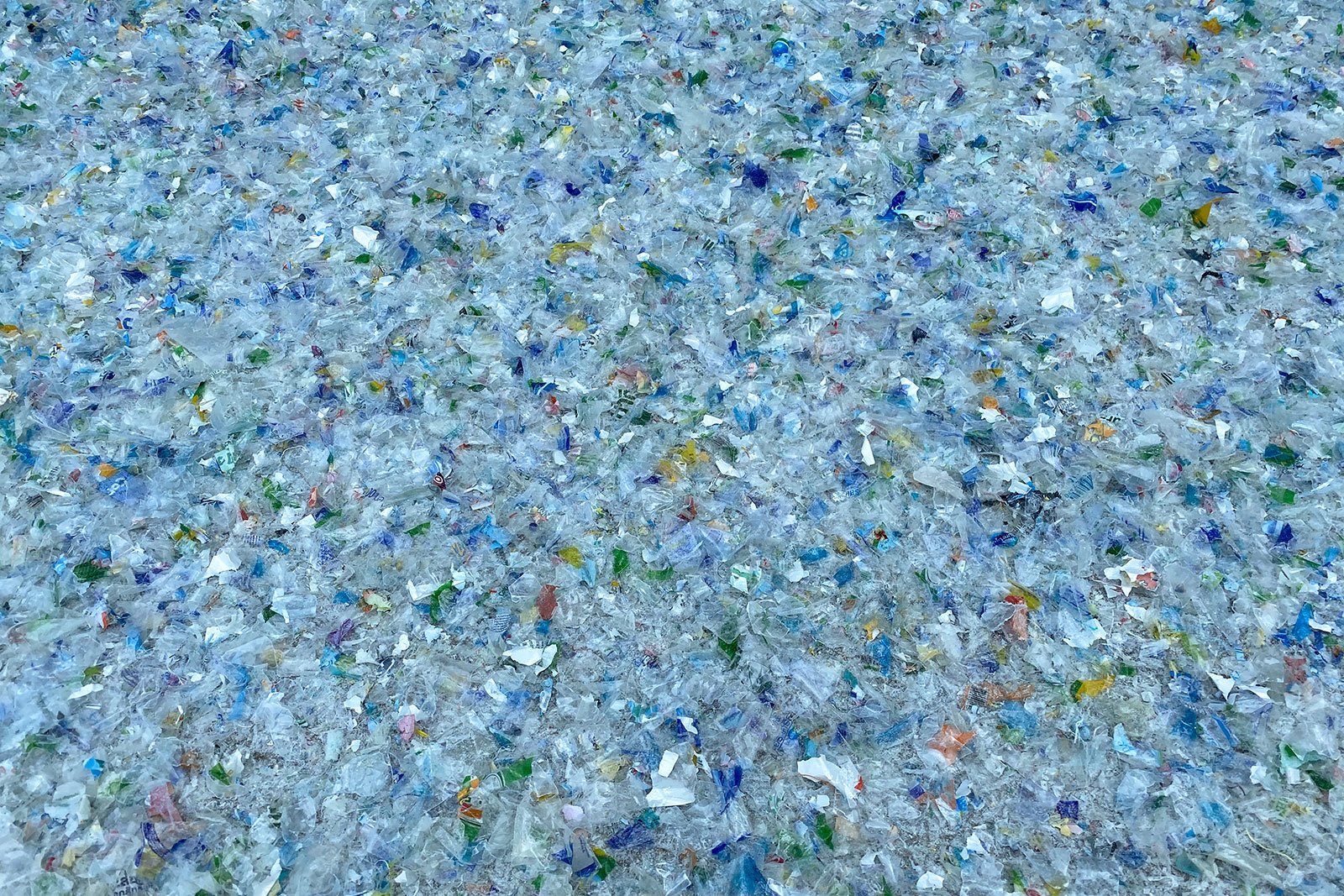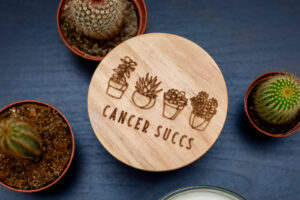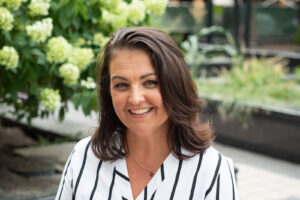Humans tend to use large quantities of plastic every day. From grocery store bags to food containers to synthetic clothing, plastic items are a core part of daily life. Unfortunately, plastic products shed fragments — called microplastics — that make their way into the environment and our bodies and affect long-term human health.
Microplastics are plastic pieces that measure less than five millimeters across. “They are dangerous, if not more so than regular plastic waste, showing many toxic effects on living organisms and the environment,” says Dr. Mark Rosenberg, CEO emeritus at the international nonprofit Task Force for Global Health and former Assistant U.S. Surgeon General. “Microplastics come from many sources, including from larger plastic debris that degrades into smaller and smaller pieces. On the other hand, some have been made small intentionally, like microbeads in facial scrubs.”
If we help to tackle this threat, we can do our part to leave this world a little better than how we found it.
Conventional plastic degrades into microplastics when disposed of, when littered, and even during practical use due to erosional breakdown of the plastic surfaces, according to Dr. Suvi Haimi, the CEO, and co-founder of Sulapac, a material innovation company with the mission to save the world from plastic waste. Eventually, those small particles become so tiny that they are lightweight enough to be carried by the wind. Consequently, microplastics have found their way up to the high altitudes of Mount Everest and the Himalayas and to biodiversity hotspots undersea.
“Airborne microplastics actually originate mostly from plastic waste in the oceans,” Haimi says. “Like air pollution, which also includes plastic particles, microplastics are almost impossible to clean once they are released into the environment. They break down into even smaller nanoplastics, which last forever, and just keep accumulating, causing a bigger and bigger threat to our ecosystem and health every day.”

How microplastics interact with soil also can affect soil functioning. Rosenberg explains that when microplastic particles enter soil, they change soil structure and texture — studies have shown that this can alter the soil’s ability to absorb water and increase its pH levels. This results in toxic effects on earthworms, snails and nematodes — organisms that play an important role in industrial agriculture. According to a March 2022 study published in the journal Frontiers in Environmental Science, “Microplastics affect the normal metabolic activities of soil organisms through physical and chemical toxic effects and multiple carriers, affect ecosystem health and service functions, and pose potential threats to human food safety, thereby causing harm to human health.”
“These plastics can also be found in water sources,” Rosenberg says, “which many animals drink from, and as a result, it affects their health.” Some health effects on marine animals include delayed growth and organ and tissue damage. While the overall consequences of microplastics on biodiversity are still unknown, Haimi says there are studies describing the adverse effects of microplastics on individual species and specific ecosystems.
For example, microplastics have been linked to causing disease in coral reefs, such as bleaching, skeletal erosion and growth abnormalities. Recently, it has been discovered that bees are carrying microplastics on their feet combined with pollen.
“What happens when there are fewer bees, and they can pollinate less due to the microplastics they carry? What will be the outcome if microplastics, like grains of sand clogging the wheels of the world, continue to spread and everything begins to function less and less efficiently?” Haimi asks. “Too little research is complete on the long-term effects, but we already have alarming signals.”
A Cause for Concern
Microplastics are in the air we breathe and travel through the food chain onto our plates.
“Microplastics run through our veins and our lungs. They have been discovered in breast milk, so even newborn babies cannot avoid being exposed to microplastics,” Haimi says.
And it is a global phenomenon, affecting consumers regardless of where they live.
Rosenberg points to research from 2021, which indicates the U.S. and U.K. tend to produce more plastic waste than any other country. Past research has also said that Asian countries with coastal communities tend to be responsible for major plastic pollution, with China, Indonesia and Vietnam as some of the worst contributors. “It’s interesting, though, because even though China and India might have the world’s largest populations, and China is a major manufacturer of plastic, both countries are far behind the U.S. in terms of who is generating the most plastic waste,” Rosenberg says. “It’s found that the overall amount of plastic pollution is made in the U.S. and is believed to be two to eight times greater than in comparable countries. The United Nations Environment Programme has said that if we continue with our routine of plastic waste use, our oceans could contain more plastic than fish by 2050.”
And while we don’t yet know all the harmful effects of microplastics, Haimi says microplastics could be compared to asbestos or lead — materials that once were considered useful until their dangerous side effects were discovered. “We can’t afford to wait around to confirm all the unintended consequences of conventional plastic. Scientists have already warned us,” Haimi says. “Just recently, in August 2022, the World Health Organization stated that we need to reduce the use of plastics and move towards a more ‘sustainable plastics economy.’” According to Haimi, this should entail a stringent circular economy in which we ensure the plastics we use are recycled, composted or renewed.
That said, Christopher Reddy, a senior scientist in the Department of Marine Chemistry and Geochemistry at Woods Hole Oceanographic Institution, has been studying ocean pollution for nearly three decades. Reddy says that without any doubt, studying microplastics is the most challenging part of his research. The reason is quite simple: “They are very much like ‘snowflakes’ — every one of them is different. A wide range of plastics are produced — all of which are different beasts. Some float on water; some don’t,” Reddy says. “On top of the different polymers, there are a wide range of additives, [such as] color, strength, flame retardants, in plastics that carry their own risk. Then you have different sizes and shapes. Lastly, plastics in the environment can act like sponges and pick up other contaminants like PCBs and DDT.”
Reddy notes that there are papers published every week about human health and plastics but none are definitive. “Some indicate the likelihood of cancer in laboratory experiments, but we don’t know with great confidence if the plastics being tested in the labs are truly representative of true exposure,” Reddy says. “With time, we will know more.”
Indeed, as Rosenberg further explains, some studies have yet to demonstrate a link between microplastics and breast cancer risk, for example, but many scientists assume that such a link will eventually be demonstrated. “Microplastics can have carcinogenic properties, basically meaning they can potentially cause cancer. Microplastics can sometimes contain a mixture of endocrine-disrupting chemicals, which can be harmful,” Rosenberg says. “Exposure to estrogen can mimic important windows of development causing changes in breast development that increase the risk of breast cancer later in life.”
A Proactive Approach
Consumers tend to be a big contributor to the plastic problem in general. However, there are things individuals can do to reduce the effects of microplastic; primarily, to reduce, reuse, recycle and replace conventional plastic — what are colloquially known as the “4Rs.”
“These 4Rs are needed in the fight against plastic pollution,” Haimi says. As we chop vegetables on a cutting board made of conventional plastic, we also scrape off pieces of plastic, and when we open and close plastic containers, again and again, they release microplastics. Haimi says that whenever possible, choose products made of materials that do not leave permanent microplastics behind.
“Synthetic clothing, such as polyester, also is a major contributor to microplastics. So, shopping for clothes more consciously can help,” Rosenberg says. “Try avoiding single-use plastics, and instead bring your own bags. Or, instead of a plastic water bottle, use a reusable one. Don’t microwave your food in plastic, and try to regularly dust and vacuum, as a good bit of dust particles in your home are made of microplastics.”
Rosenberg stresses that controlling microplastics in the U.S. alone won’t be enough to stop the threat of microplastics globally.
“Countries will have to work together, and each will have to take the necessary steps, as well as agree to what those necessary steps are,” Rosenberg says. “This will require the building and use of a coalition of nations that are willing to collaborate. And while microplastics represent a serious threat, we have some valuable lessons for how we can understand and overcome this threat. If we help to tackle this threat, we can do our part to leave this world a little better than how we found it.”







